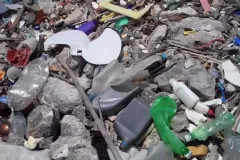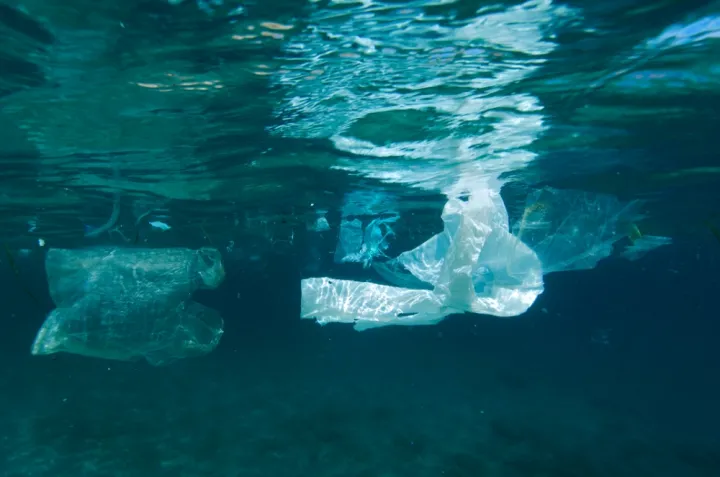Fighting Plastic From Every Angle

Ocean plastic comes in all shapes and sizes, from the flip-flops and bottles that drift off to sea to the teeny-tiny micro-plastics smaller than grains of sand. No matter the size, plastic in the ocean is a problem. It threatens marine life, human life and the beauty of our beaches and oceans. It can kill seabirds and sea turtles that accidentally eat it. It can choke whales and dolphins that become entangled in it or swallow it. The tiny pieces can even end up in the bellies of fish that go on our plates. It's hard to know just how much plastic is in the ocean, but estimates range from 40,000 tons to millions of tons.
(If you are not convinced that plastic is a problem, watch this haunting video.)
While the challenges of ocean plastic have not been solved on the grand scale, millions of people around the world are pitching in to make their beaches and coasts a little more plastic-free. Here are just three projects that give us hope for a future ocean with a lot less plastic.
Clean Up The Beaches
Young or old, everyone can get involved and help clean up the ocean. Each year, the Ocean Conservancy hosts the International Coastal Cleanup. The cleanup began in 1986 with a handful of dedicated Texans collecting trash along the Gulf of Mexico. Twenty-eight years later, it is the single largest global volunteer effort on behalf of the ocean. In 2013, nearly 650,000 people in 44 U.S. states and over 90 countries around the globe came together to remove 12,329,332 pounds of trash from 12,914 miles of coast and beach. Every piece of trash is cataloged to help scientists better understand pollution’s biggest players. The #1 most common item found: cigarette butts, of which volunteers picked up 2,043,470.
Breathing Life Back Into Ghost Nets
When you think about trash in the ocean you probably think about things that do not belong there at all like bottles and bags. But what about fishing line and fishing nets made to be used in the ocean? As it turns out, these items can be just as detrimental when lost or thrown off the side of a boat. These “ghost nets” continue to catch, choke and kill fish as they drift in the waves long after fishers are done using them.
One company saw an opportunity to turn a catastrophe into a carpet. The nylon from discarded nets is quite easily reusable and can be given a new life. Net-Works works with communities in the Philippines to collect discarded nets harming reefs and beaches and turns that material into high-quality carpet. To date, 85,000 pounds of ghost nets have been removed and resold as carpet, creating healthier reefs and jobs for coastal people.
Irish Go Green by Taxing Plastic Bags
In some places, rather than cleaning up the trash, people try to avoid making the trash in the first place. While it is easy to say that we should use less plastic, it is harder to follow through with this action. But around the world, progress is being made. Before 2002, citizens of Ireland used 1.2 billion plastic shopping bags every year, many of which ended up in waterways and then the ocean. That was until Ireland introduced a countrywide tax on plastic bags. By charging €0.15 per plastic bag, they hoped that people would bring their own reusable bags from home rather than take and throw out single-use plastic ones. The tax was welcomed with surprising enthusiasm! Plastic bag use went down 90 percent and 1 billion fewer bags were used in the first year. The tax was so successful that many cities and some entire countries have gone Irish and put their own plastic bag bans or taxes into place. Now cities in England, Philippines, Mexico, India, Australia, the U.S. and many other countries have joined the effort with bag taxes or bag bans. And you can too—just bring your own bag to the store.




